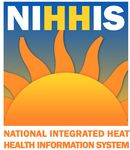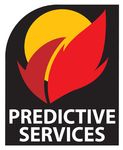Climate and Health Outlook - HHS.gov
←
→
Page content transcription
If your browser does not render page correctly, please read the page content below
Climate and Health Outlook ISSUED SEPTEMBER 2022
The Climate and Health Outlook is an efort to inform health professionals and the public on how our health may be
afected in the coming month(s) by climate events and provide resources to take proactive action. An associated
webpage includes additional resources and information.
Northern Great Plains Drought is favored to persist
or develop in Nebraska as well as parts of Montana,
North Dakota, South Dakota, and Wyoming. Above
normal wildland fre* potential is projected for
western Montana.
Northwest: One county in Idaho is projected
to have more than 5 heat exceedance days in
September 2022. Drought is favored to persist
in parts of southern Idaho, southern and central
Oregon, and central Washington. Above normal
wildland fre* potential is projected for much of
Idaho, southern and central Oregon, and central
and southern Washington.
Northeast: Drought is favored to persist in parts
of Connecticut, Maine, Massachusetts, New
Southwest: Counties in California (10), Arizona
Hampshire, New Jersey, New York, Pennsylvania,
(5), and Utah (2), are projected to have more than
Rhode Island, and Vermont. Drought is favored
5 heat exceedance days in September 2022.
to develop in parts of Delaware. Above
Drought is favored to persist in California, Nevada,
normal wildland fre* potential is projected
and Utah as well as parts of Arizona Colorado, and
for Connecticut, Maine, Massachusetts, New
New Mexico. However, drought removal is favored
Hampshire, Rhode Island, and Vermont, as well
in southern and central Arizona and much of New
as eastern New York and the northern tips of New
Mexico. Above normal wildland fre* potential
Jersey and Pennsylvania.
is projected for northern California and
north-western Nevada.
Southeast: The Atlantic basin is forecasted to
have an above-average hurricane season with
Southern Great Plains: Counties in Texas (2) are
14 – 20 named storms with winds of 39 mph or
projected to have more than 5 heat exceedance
higher, with 6 –10 of those possibly becoming
days in September 2022. Drought is favored to
hurricanes with winds of 74 mph or higher, and
persist in Kansas, much of Oklahoma and northern
3 – 5 possibly becoming major hurricanes with
Texas. However, drought removal and improvement
winds of 111 mph or higher. One county in Florida
is favored in most of Texas and eastern Oklahoma.
is projected to have more than 5 heat exceedance
Above normal wildland fre* potential is projected
days in September 2022. Drought is favored
for much of Oklahoma.
to develop in parts of North Carolina and South
Carolina. However, drought removal/improvement
is favored in parts of Arkansas, Mississippi,
and Tennessee.
Drought Heat Hurricane Wildfre
*Smoke from wildfres can impact health hundreds of miles from site of the fre.
A “heat exceedance day” is when the daily maximum temperature is above the 95th percentile value of the historical temperature distribution in that county.
Developed with data from the Centers for Disease Control and Prevention, National Oceanic and Atmospheric Administration, and National Interagency
Fire Center.
We want to hear from you! Please send your feedback on ways to improve the Climate and Health Outlook to ocche@hhs.gov. 1Climate and Health Outlook
Who is at high risk in the counties
with above-normal wildland fre
potential in September?
Wildland fres are occurring more frequently in the United
States and present a health hazard for populations living
close to a fre. As indicated in the map to the left, 312 coun-
ties across 17 states are projected to have above-normal
wildfre potential in August. In these counties, the total popu-
lation at risk is 54,742,313 people:
68 (22%) have a high number of people aged 65 or over,
living alone.
81 (26%) have a high number of people without health
insurance
Figure. The National Signifcant Wildland Fire Potential Outlook
identifes areas with above, below, and near normal signifcant fre
84 (27%) have a high number of uninsured children.
potential using the most recent weather, climate, and fuels data 60 (19%) have a high number of people with frequent
available. These outlooks are designed to inform decision makers for mental distress.
proactive wildland fre management.
103 (34%) have a high number of adults with asthma.
Year-to-date acres burned for the US is approximately
61 (20%) have a high number of adults with coronary
116% of the 10-year average, with over half of the total
heart disease.
acres burned in Alaska alone. Above normal signifcant
fre potential is forecast for much of the Northeast 48 (16%) have a high number of people living in poverty.
September through November due to ongoing drought. 114 (37%) have a high number of people with electricity-
Above normal potential is also forecast for much of dependent medical equipment and enrolled in the HHS
Oklahoma in September and October, expanding to emPOWER program.
include all of Oklahoma and Texas by December. Most 42 (14%) have a high number of people in mobile homes.
of northern California, central and southwest Oregon, 77 (25%) have a high number of people with one or more
southeast Washington, Idaho, and far western Montana disabilities.
will have above normal potential in September. Lee
70 (23%) are identifed as highly vulnerable by CDC’s
sides of the Hawai’ian Islands will continue to have
Social Vulnerability Index.
above normal potential through November before
*“A high number” indicates that these counties are in the top quartile for
returning to normal potential in December. this indicator compared to other counties
Wildfres Afect Health in Many Ways
Wildland fre increases the risk for a diverse range of health outcomes from both the fre itself and smoke. For example:
Due to the nature of their work, frefghters For pregnant people, smoke exposure
are at risk of developing severe heat- may increase the risk of reduced
related illness (such as heat stroke) and birth weight and preterm birth.
rhabdomyolysis (muscle breakdown).
Wildfre smoke may afect the immune
Wildfre can cause burns through contact system, potentially leading to increased
with fames and hot surfaces as well as vulnerability to lung infections
chemical and electrical burns. like COVID-19.
Wildfre smoke can lead to disorders Smoke from wildfres can travel downwind
including reduced lung function, bronchitis, and afect air quality hundreds of miles away
exacerbation of asthma, and cardiovascular from the fre.
efects like heart failure.
We want to hear from you! Please send your feedback on ways to improve the Climate and Health Outlook to ocche@hhs.gov. 2Climate and Health Outlook
Real-Time Tracking of Respiratory Outcomes Wildfre Smoke Can Travel Far Distances
Linked to Wildfre Smoke
2.0%
2018 Camp Fire 2018 Alert
Percent of Emergency Department Visits
1.5%
1.0%
0.5%
0.0%
1 3 5 7 9 11 13 15 17 19 21 23 25 27 29 31 33 35 37 39 41 43 45 47 49
Week of the Year
Figure. This graph overlays the percentage of Emergency Depart-
Figure: Example of the AirNow Fire and Smoke Map run by U.S. EPA
ment (ED) visits due to asthma or reactive airway disease (RAD) in
and the U.S. Forest Service. This screenshot, from September 15, 2020,
San Mateo County during the 2018 Camp Fire. It uses Morbidity and
shows the far distances smoke can travel from the location of wildfres.
Mortality Weekly Report weeks, which begin with 1 for the frst week The map also shows the U.S. Air Quality Index (AQI) from hundreds of
of the year. Each red dot indicates an instance where the percent of air quality monitors and more than 10,000 privately owned air sensors.
ED visits due to asthma or RAD is exceptionally high. You can learn Green symbols indicate a good AQI; yellow indicates moderate;
more on the CDC’s website. orange indicates unhealthy for sensitive groups; red indicates
As wildfres continue to threaten the public’s health unhealthy for everyone; and purple indicates very unhealthy. The
fame symbols indicate a large fre incident, and the small yellow
across the country, agencies are demonstrating the utility, spark symbols indicate unverifed satellite fre detections.
reliability, and timeliness of syndromic surveillance data for
monitoring and characterizing health impacts. During the Wildfre smoke can impact the health of people close
frst two weeks of the 2018 Camp Fire in California, there to the fre and at distances far from fre impacted
were higher-than-expected increases in 24-hour particulate areas, depending on meteorological conditions, such
matter (PM2.5) concentrations in San Mateo County, which as wind speed and direction. As wildfres burn, they
reached unhealthy levels. San Mateo County public health generate smoke that is comprised of a mixture of
ofcials monitored for acute respiratory health efects particulate matter (PM) (also referred to as particle
and, in collaboration with the CDC National Syndromic pollution) and gaseous pollutants (e.g., carbon
Surveillance Program and the California Department of monoxide). The pollutant of most concern to public
Public Health, they demonstrated an increase in the weekly health during a smoke event is fne particulate matter,
percentage of ED visits for asthma or reactive airway or PM2.5, because these particles can penetrate deep
disease (RAD) exacerbation, and an increase in the number into your lungs and cause adverse health efects.
of visits for smoke exposure or smoke inhalation. Among
participating EDs, the county’s safety net hospital had
the highest average daily percentage of ED visits for all Resources to Reduce Health Risks Associated with
respiratory syndromes, excluding infuenza-like illness and Wildfre and Smoke
pneumonia. The Ready.gov Wildfres site, Centers for Disease Control
and Prevention (CDC) Wildfres site, and Environmental
Protection Agency (EPA) Smoke-Ready Toolbox for Wildfres
include information about how to prepare for wildfres, stay
safe during a fre, and return home after a fre.
Pregnant people should take actions to reduce their
exposure to wildfre smoke, which could afect the
developing fetus. Other groups like young children, the
elderly, those with pre-existing heart and lung disease, and
outdoor workers also should take extra care to reduce their
exposures to wildfre smoke. Monitor fres and air quality
in your area through AirNow and follow instructions about
exercise and going outside for “sensitive individuals.”
Source: https://ww2.arb.ca.gov/protecting-yourself-wildfre-smoke
We want to hear from you! Please send your feedback on ways to improve the Climate and Health Outlook to ocche@hhs.gov. 3Climate and Health Outlook
U.S. Monthly Drought Outlook
Drought Tendency During the Valid Period
Valid for September 2022
Released August 31, 2022
Who is at high risk in the counties
projected to have drought in
September?
As indicated in the map to the left, 1294 counties across
42 states are projected to have persistent/remaining
Depicts large-scale trends based
on subjectively derived probabilities
guided by short- and long-range
statistical and dynamical forecasts.
Use caution for applications that
can be affected by short lived events.
"Ongoing" drought areas are
drought or drought development in September. In these
counties, the total population at risk is 157,164,458 people
based on the U.S. Drought Monitor
areas (intensities of D1 to D4).
and, of those, 1,612,440 people work in agriculture.
NOTE: The tan areas imply at least
a 1-category improvement in the
Drought Monitor intensity levels by
the end of the period, although
Of these counties:
drought will remain. The green
Author: areas imply drought removal by the
Adam Allgood end of the period (D0 or none).
NOAA/NWS/NCEP/Climate Prediction Center
Drought persists
Drought remains but improves
Drought removal likely
Drought development likely 368 (29%) have a high number of people aged 65 or
over, living alone.
http://go.usa.gov/3eZGd
362 (28%) have a high number of people living in
rural areas.
Figure: The National Weather Service Climate Prediction Center's
Monthly Drought Outlook is issued at the end of each calendar 247 (19%) have a high number of people living in poverty.
month and is valid for the upcoming month. The outlook predicts
whether drought will persist, develop, improve, or be removed 200 (16%) have a high number of people with frequent
over the next 30 days or so. For more information, please refer to mental distress.
drought.gov. 195 (15%) have a high number of adults with asthma.
For September, drought expansion is favored for portions 439 (34%) have a high number of people without
of the Plains and western Corn Belt. However, above- health insurance.
average rainfall in the southwest is favored, raising the 519 (40%) have a high number of uninsured children.
potential for further drought reduction across the southern
187 (15%) have a high number of Black or African
Four Corners region from the Monsoon. Forecasted
American persons.
heavy rain across Texas and the Gulf Coast states favors
further drought improvements and a potential for fooding. 320 (25%) have a high number of people with severe
Drought persistence remains favored across the Northeast housing cost burden.
and drought conditions are favored to continue expanding 246 (19%) have a high number of people in mobile homes.
across Hawai’i. Drought conditions are favored to improve 251 (19%) have a high number of people with one or
across Puerto Rico. more disabilities.
Drought can have direct and indirect impacts on health – 301 (23%) are identifed as highly vulnerable by CDC’s
increasing incidence of illness among those living in the Social Vulnerability Index.
afected area and worsening mental health outcomes as *“A high number” indicates that these counties are in the top quartile forthis
livelihoods are challenged. indicator compared to other counties
Drought Afects Health in Many Ways
Drought increases the risk for a diverse range of health outcomes. For example:
Low crop yields can result in rising food If there isn’t enough water to fow,
prices and shortages, potentially leading waterways may become stagnant breeding
to malnutrition. grounds for disease vectors like mosquitos
as well as viruses and bacteria.
Dry soil can increase the number of
particulates like dust and pollen that are Drought’s complex economic consequences
suspended in the air, which can irritate the can increase mood disorders, domestic
bronchial passages and lungs. violence, and suicide.
Dust storms can spread the fungus that Long-term droughts can cause poor-quality
causes coccidioidomycosis drinking water and leave inadequate water
(Valley Fever). for hygiene and sanitation.
We want to hear from you! Please send your feedback on ways to improve the Climate and Health Outlook to ocche@hhs.gov. 4Climate and Health Outlook
The Distribution of Lyme Disease Which Seasons Are People Most Often Bitten by
Blacklegged Ticks?
Figure: Emergency department (ED) visits for tick bites by month for
2020 – 2022. This graph shows 2022 following a similar pattern to
previous years, with tick bites spiking in the spring. If this trend con-
tinues, there may also be a second, smaller spike in the fall
In areas in the eastern US where Lyme disease cases are
common, people are most likely to be bitten by black-
legged ticks at two times of year: from April through July
when nymphs are active, and in September through
November when adults are active. Nymphal ticks, which
feed in late spring and early summer, pose a particularly
high risk due to their abundance and small size (about the
size of a poppy seed), which makes their detection difcult.
However, adult deer ticks can also transmit the infection
and may be more likely to be infected themselves. How-
ever, owing to their larger size (about the size of sesame
seed), adult ticks are often detected and removed from
people before disease transmission can occur. Lyme dis-
Figure: Lyme disease occurs primarily in the upper midwestern, ease can be prevented by avoiding tick bites and prompt
mid-Atlantic, and northeastern United States. It is transmitted by removal of ticks on people.
blacklegged or “deer” ticks, which also transmit the agents of ana-
plasmosis, babesiosis and Powassan virus disease. The lack of dots
in Massachusetts in 2018 is due to a diference in reporting stan-
dards, not an absence of Lyme disease.
An estimated 476,000 Americans are diagnosed and
treated for Lyme disease each year. It is the most common
vector-borne disease in North America. The incidence
of Lyme disease in the United States has nearly doubled Figure: The diferent sizes of the blacklegged tick through 4 stages:
egg, larvae, nymph, and adult.
since 1991, from 3.74 reported cases per 100,000 people
to 7.21 reported cases per 100,000 people in 2018. Maine,
Vermont, and New Hampshire have experienced the Resources to Reduce Health Risks Associated with
largest increases in reported case rates. Climate is one Lyme Disease
of several factors that defne when and where Lyme and The Centers for Disease Control and Prevention (CDC)
other tickborne diseases are most likely to occur. Mild win- Lyme Disease site has information on how to avoid Lyme
ters and warmer early spring temperatures are expanding Disease, common symptoms, and treatment. The Tick Bite
the seasons when ticks are active, resulting in more weeks Bot can assist you in removing attached ticks and seeking
of the year that Americans are at risk of tick encounters. health care, if appropriate, after a tick bite. CDC’s
Expansion of the range of infected ticks puts an increasing Tickborne Diseases of the United States ofers information
number of communities at risk for Lyme and other tick- on tick identifcation, tickborne diseases, and treatment.
borne diseases.
We want to hear from you! Please send your feedback on ways to improve the Climate and Health Outlook to ocche@hhs.gov. 5Climate and Health Outlook
THANK YOU to the partners who provide
invaluable information, expertise, and data
for the Climate and Health Outlook series:
We want to hear from you! Please send your feedback on ways to improve the Climate and Health Outlook to ocche@hhs.gov. 6You can also read



























































